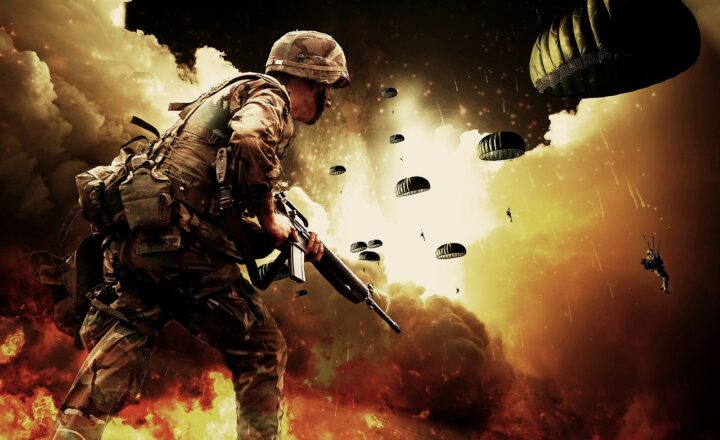
Swords have been a symbol of power, honor, and warfare throughout human history. These iconic weapons have evolved from the rudimentary bronze blades of ancient civilizations to the sophisticated designs of modern tactical swords. In this article, we delve into the rich history of swords, exploring their development through various eras, cultures, and technologies, while also examining their role in society and warfare.
1. The Birth of the Sword: The Bronze Age
During the Bronze Age, around 3000 BC, the advent of metalworking marked a pivotal moment in weaponry. The earliest swords were crafted from bronze, which was durable and capable of being shaped into sharp blades. These early swords were primarily ceremonial and symbolic, reflecting the status of leaders and warriors. The development of bronze tools allowed empires like Mesopotamia and Egypt to expand their territories and exert power.
The first known swords were straight and relatively short, making them effective for slashing and stabbing. Archaeological findings from tombs in these regions often include bronze swords, emphasizing their importance both in battle and as symbols in the afterlife. As trade routes expanded, sword-making techniques spread throughout Europe and Asia, leading to innovations in design and function.
2. The Iron Age: Strength and Versatility
By the Iron Age, around 1200 BC, iron became the primary material for sword manufacture. Iron swords were stronger and cheaper to produce than their bronze predecessors, drastically increasing their accessibility. This change led to the proliferation of swords among common soldiers, not just elites, transforming military dynamics.
The design of swords evolved during this period, with a longer blade making it ideal for thrusting and slashing in hand-to-hand combat. Cultures like the Celts and the Romans optimized these designs into the iconic gladius and spatha swords. Roman legions utilized these weapons effectively in their conquests, showcasing the strategic importance of a dependable sword in warfare.
Furthermore, advancements in metallurgy led to techniques like quenching and tempering, resulting in swords that could maintain sharp edges and resist bending under pressure. These innovations laid the groundwork for the legendary and beautifully crafted swords that would follow.
3. The Medieval Era: Craftsmanship and Chivalry
The medieval period saw swords achieving an almost mythical status. As warfare changed with the introduction of knights and chivalric traditions, personal swords became symbols of status and honor. The designs became more intricate, with hilts adorned with precious metals and stones.
During this time, the blade’s shape varied significantly, leading to the development of the longsword, sabre, and broadsword. Each sword was tailored for particular fighting styles—some ideal for slashing from horseback, others for thrusting in infantry combat. The famous arming sword served as the primary weapon for knights, while the rapier emerged in later centuries as a weapon for civilian dueling.
Swordsmiths became revered artisans, capable of producing unique and highly functional pieces that showcased their skill. The influence of blacksmithing during this era resulted in legendary swords such as Excalibur, reflecting how swords became entrenched in the cultural psyche of societies.
4. The Renaissance and the Birth of Firearms
The Renaissance brought about a period of rapid innovation in weaponry, particularly with the advent of gunpowder. While pikes and early firearms like arquebuses became prominent on the battlefield, swords still held their ground. The introduction of the rapier reflected a shift toward civilian use of swords, with fencing styles emerging in French and Italian schools.
Despite the rise of firearms, the sword maintained its status as a gentleman’s weapon. By this time, the dueling culture flourished, leading to elaborate swordfighting styles and a focus on agility and finesse. The decorative aspects of swords continued to evolve, with ornate hilts and sheaths becoming commonplace, symbolizing the owner’s wealth and status.
5. The 19th and 20th Centuries: Militarization and the Modern Era
As the 19th century unfolded, the saber became a staple for cavalry units across Europe and North America. However, as wars transitioned to more industrialized and mechanized forms, the role of the sword shifted dramatically. The iconic phrase, “The sword is mightier than the pen,” began to symbolize the duality of power through combat and diplomacy.
In the 20th century, swords became relegated to ceremonial roles rather than practical combat tools. Modern military and naval forces often incorporate swords into uniforms, signifying rank and heritage. For instance, the Navy saber and the officer’s sword saw continued use in parades and formal ceremonies.
Despite the technological advancements, interest in swords persisted among enthusiasts, martial artists, and historians who appreciate these weapons for their craftsmanship, historical significance, and aesthetic qualities.
6. Contemporary Sword Culture: Collecting and Martial Arts
In recent years, swords have experienced a resurgence in popular culture, thanks in part to movies, television, and gaming. Collectors and practitioners of martial arts, such as Kendo and Filipino martial arts, have contributed to an enduring passion for the sword. Furthermore, modern blacksmiths continue to experiment with traditional and contemporary designs, resulting in unique blades that blend history with innovation.
Today, swords are crafted for display and functionality, with a variety of materials including carbon steel, stainless steel, and modern composites. Various blade styles and hilt designs can be found in the market, catering to enthusiasts, collectors, and martial artists alike.
The appreciation for swords transcends beyond their physical use; they are viewed as historical artifacts embodying innovation, artistry, and cultural significance. As enthusiasts continue to practice martial arts and engage in sword-related activities, the legacy of swords remains vibrant.
Conclusion
The evolution of swords reflects humanity’s journey through warfare, culture, and artistry. From their origins in the Bronze Age to their contemporary roles in martial arts and culture, swords have remained an iconic symbol of power and identity. As we look back at their evolution, we continue to appreciate their significance and impact on human civilization. Swords are not just weapons; they are reflections of the times and cultures that forged them, telling stories that are as captivating as the blades themselves.







